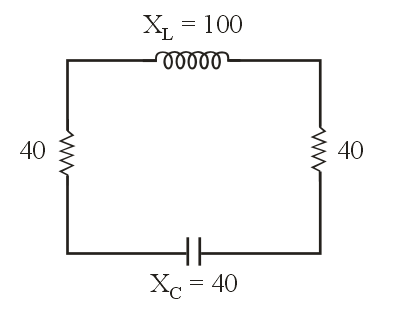The potential differences across the resistance, capacitance, and inductance are \(80~\text{V}\), \(40~\text{V}\) and \(100~\text{V}\) respectively in an \(LCR\) circuit. The power factor of this circuit is:
1. \(0.4\)
2. \(0.5\)
3. \(0.8\)
4. \(1.0\)
1. \(0.4\)
2. \(0.5\)
3. \(0.8\)
4. \(1.0\)
Current in an ac circuit is given by then -
1. rms value of current is 5 A
2. mean value of this current in one half period will be
3. if voltage applied is then the circuit must be containing resistance and capacitance.
4. if voltage applied is , the circuit may contain resistance and inductance.
Which of the following curves correctly represents the variation of capacitive reactance with frequency n -
1.
2.
3.
4.
In the LCR series circuit, the voltmeter and ammeter readings are -
1. E=100 volts, I=2 amp
2. E=100 volts, I=5 amp
3. E=300 volts, I=2 amp
4. E=300 volts, I=5 amp

1. choke is cheap
2. there is no wastage of power
3. choke is compact in size
4. choke is a good absorber of heat
| 1. | \(100~\text{mA}\) | 2. | \(200~\text{mA}\) |
| 3. | \(20~\text{mA}\) | 4. | \(10~\text{mA}\) |
An AC voltage is applied to a resistance R and an inductor L in series. If R and the inductive reactance are both equal to 3 , the phase difference between the applied voltage and the current in the circuit is:
1.
2.
3. zero
4.











